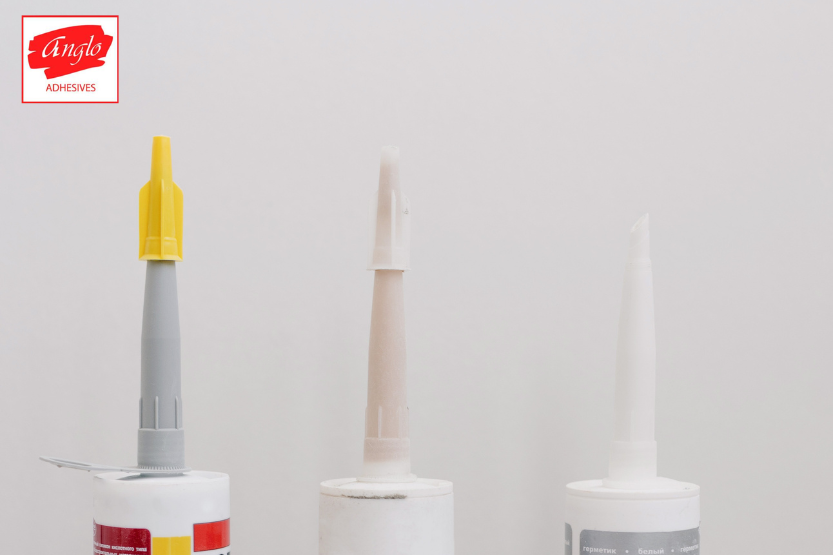Blog
What are the Different Types of Adhesives?

In this article, we will discuss different types of adhesives categories and how to use each of them.
There are many different types of adhesives, each for specific conditions and applications, and there are multiple factors to consider when choosing the correct product.
Adhesives can be categorised in different ways according to their chemical composition, physical form, classification, or load-bearing capability.
Types of Adhesives by Chemical Composition
Different adhesives can be categorised by their chemistries. Below are a few examples of available chemical compositions.
Polyimide adhesives
Polyimides, classified among various types of adhesives, are one-part synthetic polymers typically containing solvents. Also, renowned for their strength, heat, and chemical resistance, they excel in performance even at extremely high temperatures, reaching up to 500 degrees Celsius.
They are offered in two formulations, thermoset and thermoplastic, and are often used for coating or electronic insulation.
Epoxy adhesives
Epoxies are a type of structural adhesive. In addition, they are highly temperature and solvent resistant and can be structurally bonded to most types of materials, such as metals, ceramics, wood, and plastics.
Polyurethane adhesives
Polyurethanes, classified among various types of adhesives, are polymer-based adhesives utilised for constructions necessitating high-strength bonding and permanent elasticity. Offered often as two-part adhesives, they serve myriad purposes. Nevertheless, unlike epoxy adhesives, they rely on moisture for setting, rendering them suitable for projects where other types of glues may be inadequate.
Types of Adhesives by Physical Form
Adhesive physical form affects product application. Adhesives can be spread manually or using tools and equipment.
Below are the different physical forms available.
Film
Adhesive films are available in rolls or pre-cut lengths or shapes, provide easy application, and have no pot-life restrictions. Hence, they are available in thicknesses between 2 and 8 mm for different applications.
Pellets
Adhesives in the form of pellets are typically hot-melt or thermosetting adhesives. Thus, these must usually be inserted into a hot melt gun or melted and sprayed.
Paste
Adhesive pastes are often high in viscosity, thereby making them difficult to spread during the curing period. Moreover, they are ideal for adhesions requiring gap filling and are usually applied with the use of tools, such as a caulking gun.
Liquid
Liquid is the most common form of adhesive. And so, they are one of the easiest to apply, but they can leak or sag during the curing process. They often take longer to cure but can be applied in thin layers to help this process.
Types of Adhesives by Load Bearing Capability
The load-bearing capability of an adhesive indicates how well it can hold different substrates together. They can be separated into three categories.
Structural
Structural adhesives are offered as pastes, liquids, and films. They are strong and usually used below their glass transition temperature (Tg), the temperature at which polymer transitions into a soft and rubbery material. Some well-known structural adhesives are epoxies, cyanoacrylates, urethanes, and acrylics.
Non-structural
Non-structural adhesives, one of the types of adhesives, are utilised for light loads or in more aesthetic applications. Both non-structural and semi-structural adhesives serve as much more cost-efficient alternatives to structural adhesives, yet they are not suitable for all types of projects. Non-structural adhesives are frequently employed as secondary fasteners in more long-term attachments rather than as the primary adhesive.
Semi-structural
Semi-structural adhesives are ideal for less critical applications, though they still offer more strength and support than non-structural adhesives. They can therefore be used to replace either structural or non-structural adhesive applications, depending on the project.
Types of Adhesives by Classification
Adhesives are also classified by structure.
Thermosetting
Thermosetting adhesives typically come in two-part forms, where resin and hardener are combined to achieve the desired setting time. While resin and hardener can also be used individually, this approach is less common due to storage requirements; they must be kept at low temperatures to prevent premature reaction, which shortens shelf life. Pot life, a crucial property of thermosetting adhesives, denotes how long a two-part adhesive remains effective for bonding after mixing. A short pot life leads to rapid hardening, leaving insufficient time for completion, while a long pot life can prolong setting time and slow down assembly. These considerations are essential when exploring different types of adhesives for various applications.
Pressure sensitive
Adhesives in this category are low-modulus elastomers, meaning they do not require much pressure to deform and can be used on wet surfaces. They are quite durable for light-load applications and are normally purchased as tapes or labels for non-structural applications.
Contact
Contact adhesives are elastomeric and are applied to both items being bonded together. Once the solvent evaporates, the items are brought into direct contact. These types of adhesives are found in rubber cement or countertop laminates.
Hot melt
Hot-melt adhesives are brought to liquid form with heat and can be used to coat entire surfaces before the adhesive cools into a solid polymer. Many industrial sectors appreciate them for their eco-friendliness, safety, and shelf life. Different types of hot melt adhesives include EVA-based, APAO-based, and those that are pressure-sensitive. Polyurethane hot melts are also available, but they don’t have the same properties as standard hot melt adhesives.
Reactive hot melt
Unlike non-reactive hot melt, reactive hot melt adhesives generate additional chemical bonds after the solidification process. This results in stronger adhesion once cured, expanded bonding, as well as a higher resistance to moisture, heat, and chemicals.
Trust Anglo for High Quality Adhesives
There are many different types of adhesives. With their different chemical compositions, forms, classifications, load-bearing capabilities, and other properties, choosing the right adhesive for your project may be confusing. Anglo offers a variety of high-quality adhesives for different applications, but most importantly, the technical expertise to guide you in your selection and support your project from beginning to end.
For more information or if you need help choosing the right product for your project, contact us!